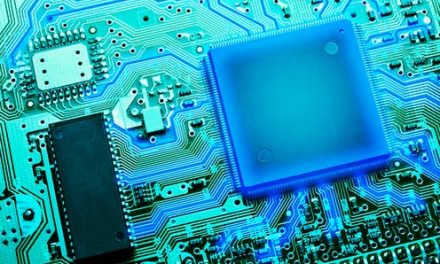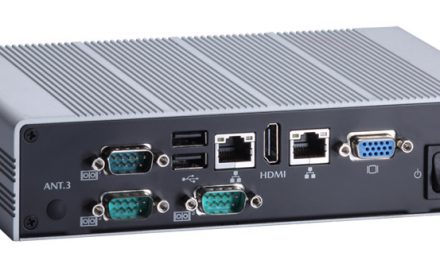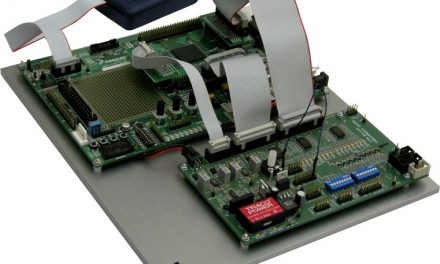Nowadays, virtually every device we use has a microcontroller inside it. Car radio systems, Television sets and radios are a few examples of the very many devices we use on a daily basis that contain microcontrollers. This article explains the various types of microcontrollers.
Before we explore the various microcontroller types, let us start with the definition.
Table of Contents
What is a Microcontroller?
This is an integrated circuit (IC) device used for controlling other portions of an electronic system, usually via a microprocessor unit, memory, and some peripherals. These processing devices are used in automatically controlled products and devices such as remote controls, office machines, control system and power tools.
Elements of a Microcontroller
The various types of microcontrollers all consist of a few basic elements. These are:
1. Central Processing Unit (CPU)
This is regarded as the “brains” of the device. This is responsible for performing arithmetic operations, managing data flow and generating control signals in accordance with the sequence of instructions present in the device. It also performs data transfer operations which communicate commands to other components present in the larger embedded system.
2. Memory
This is where the data that the processor has received is stored. This data is used by the processor to respond to the instructions it has been programmed to carry out. The memory present is divided into two:
o Program Memory
This stores long term information about the instructions that the CPU carries out. This type of memory is non-volatile.
o Data Memory
This stores short term memory that is required for temporarily storing data while the instructions are being executed. This type of memory is volatile.
3. Peripherals
This refers to the input and output devices connected to the microcontroller. These form the interface through which the processor interacts with the outside world. The input devices receive data and send it to the processor in the form of electric signals. The processor processes the data and sends it to the output devices present.
4. Supporting Elements
These include the following:
o Analogue to Digital Converter
This converts analogue signals to digital signals, allowing the microcontroller to measure the value of analogue inputs.
o Digital to Analogue Converter
This performs the inverse function of an Analogue to Digital converter.
o System Bus
This is the connecting wire that links all of the microcontroller components.
o Serial Port
This is an input/output port that allows the microcontroller to connect external components.
Types of Microcontrollers
There are many types of microcontrollers. The microcontroller types are based on the following:
1. Bits
8 bit microcontrollers are types of microcontrollers used to execute logic as well as arithmetic operations. They are cheap, but are not suitable for high accuracy applications. Examples are: the Intel 8051, PIC1x and Motorola MC68HC11 families.
16 bit microcontrollers execute logic and arithmetic operations with greater accuracy. The most common examples are: the Intel 8096, 8051XA, PIC2x, Intel 8096 and Motorola MC68HC12 families.
32 bit microcontrollers are used to execute 32 bit instructions. They are more accurate than their predecessors. They are used in automatically controlled applications such as implantable medical appliances, and office machines. Examples are: 8051XA, PIC2x, Intel 8096 and Motorola MC68HC12 families.
2. Memory
o External Memory Microcontroller
These refer to the microcontroller types that contain an embedded structure outside of the functioning blocks of the microchip. The 8032 is an example which does not have program memory on the chip.
o Embedded Memory Microcontroller
These refer to the types of microcontrollers that have an embedded structure which comprises of all the functioning blocks on the chip. The 8051 has all the program and data memory, interrupts, I/O ports, counters & timers, and therefore is an embedded memory microcontroller.
3. Instruction Set
o Complex Instruction Set Computers (CISC)
These refer to microcontroller types that execute instructions in variable machine cycle lengths. They are complex, and more difficult to design.
o Reduced Instruction Set Computers (RISC)
These refer to types of microcontrollers that execute instructions in one machine cycle. They are comprised of a simple instruction set, and are easy to design.
4. Memory Architecture
The memory architecture of microcontrollers is divided into two. These are:
o Harvard Memory Architecture Microcontrollers
These are microcontroller types that have different memory addresses for the data and for the instructions.
o Von Neumann Memory Architecture Microcontrollers
These are also known as the Princeton memory architecture microcontroller. These are types of microcontrollers that have the same memory address for the data and instructions.
5. Vendor Based
o Peripheral Interface Controller (PIC Microcontroller)
These are microcontroller types provided by the company Micro-chip technology. This company has been extremely successful in 8 bit microcontrollers. They are mainly used by hobbyists and industrialists due to the wide availability, low coast and large user base.
o Advanced Virtual Reduced Instruction Set Computer (AVR Microcontroller)
These are microcontrollers designed and developed by Atmel. They employ on-chip flash memory basically for storing programs.
o Advanced Reduced Instruction Set Computer Microcontroller (ARM Microcontroller)
These are types of microcontrollers that are designed by ARM. Unlike the AVR microcontroller, they do not have on board flash memory.
Applications of Microcontrollers
1. Consumer Electronics Products
In this application, various microcontroller types are used in the automation of the home. This includes use in security systems, washing machines, microwave ovens, toys, video cameras, and smart fridges.
2. Instrumentation and Process Control
In this application, the various types of microcontrollers are used in measuring parameters present. Devices which are used which contain these microcontrollers are: digital multi meters, leakage current testers, Supervisory Control and Data Acquisition systems (SCADA), and oscilloscopes.
3. Office Equipment
In this application, the various microcontroller types are used to automate the office. Examples include printers, photocopiers, scanners, projectors, and air conditioning units.
4. Multimedia applications
In this application, the various types of microcontrollers are used for playing music, playing videos, or both.
Examples include: MP3 players, DVD players, CD players, Hi-Fi stereo systems, and home theatre systems.
5. Medical applications
In this application, the various microcontroller types are used in medical devices present to monitor the status of patients.
They are mostly used in Electrocardiogram machines (ECG), Accu-check, digital blood pressure testers, and digital scales.
Conclusion
The article has explained what a microcontroller is, and the various types of microcontrollers have been brought out. We hope you found this article informative.





